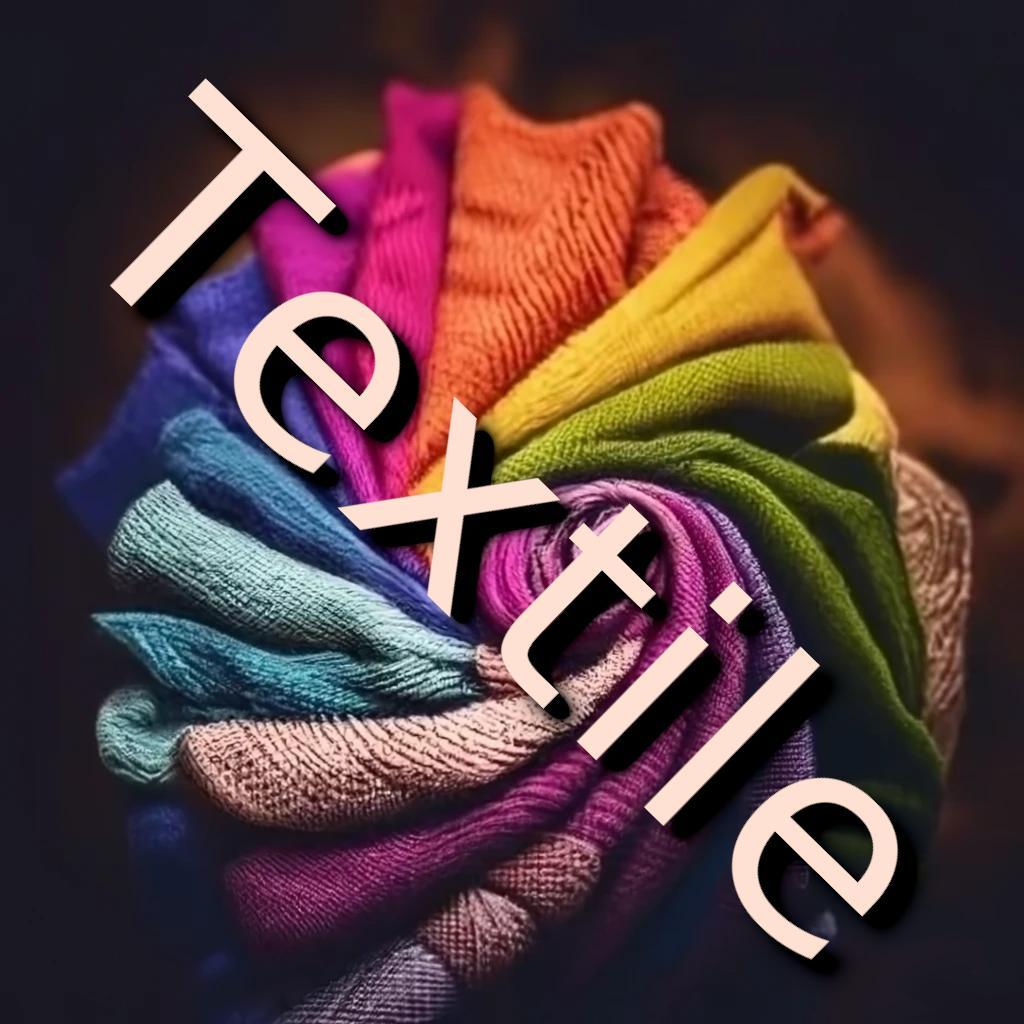


Textiles, leather, and fabric form the foundation of countless products we encounter daily, from the clothes we wear to the upholstery in our homes. Understanding the nuances of these materials allows us to make informed choices and appreciate the craftsmanship that goes into creating them. This comprehensive guide offers valuable tips for navigating the world of textiles, leather, and fabric, helping you make mindful decisions and care for these materials with precision.
Understanding Fiber Types:
Textiles come in a variety of fiber types, each with its unique characteristics. From natural fibers like cotton, linen, and wool to synthetic fibers such as polyester and nylon, understanding the properties of each material helps you choose the right fabric for specific applications.
Sustainable Choices:
In an era where sustainability is paramount, consider opting for textiles and fabrics produced through eco-friendly practices. Look for certifications such as Global Organic Textile Standard (GOTS) or OEKO-TEX Standard 100, indicating that the materials meet certain environmental and social criteria.
Fabric Care Labels:
Pay close attention to fabric care labels when purchasing clothing or textiles. These labels provide essential information on how to launder, dry, and care for the fabric. Following these instructions ensures longevity and maintains the integrity of the material.
Leather Grades and Types:
Leather comes in various grades and types, each with distinct characteristics. Full-grain leather is known for its durability, while top-grain leather offers a more uniform appearance. Understanding these differences helps you choose leather products that align with your preferences and intended use.
Leather Maintenance:
Leather requires proper care to maintain its luster and longevity. Regularly clean leather items with a soft, damp cloth, and use specialized leather conditioners to prevent drying and cracking. Store leather products away from direct sunlight and heat to avoid fading and damage.
Upholstery Fabrics for Home Décor:
When choosing fabrics for home upholstery, consider factors such as durability, stain resistance, and colorfastness. Crypton and Sunbrella fabrics, for example, are known for their durability and resistance to stains, making them ideal for furniture upholstery.
Mix and Match Textures:
Experimenting with different textures adds visual interest to your clothing or home décor. Combine smooth fabrics with textured ones to create a balanced and dynamic look. Mixing materials like silk and denim or leather and wool adds depth to your style or living space.
DIY Fabric Projects:
Embark on do-it-yourself fabric projects to personalize your space or wardrobe. From simple sewing projects like throw pillows to more complex endeavors like reupholstering furniture, DIY projects allow you to explore your creativity and develop new skills.
Fabric Color Psychology:
Colors evoke emotions and set the tone for a space. Understand color psychology to choose fabrics that align with the atmosphere you want to create. For example, cool tones like blues and greens promote a calming effect, while warm tones like reds and yellows add vibrancy.
Repurposing Textiles:
Extend the life of textiles by repurposing old clothing or fabric remnants. Create quilts, tote bags, or even fabric wall art from pieces that might otherwise go to waste. This sustainable approach adds a unique touch to your home while minimizing environmental impact.
A textile store is a retail store that specializes in selling fabric, sewing supplies, and related products. Textile stores may also offer services such as custom sewing, alterations, and classes on sewing techniques and patterns.
The textile industry has experienced growth in recent years due to several factors, including an increase in interest in sewing and crafting, the popularity of DIY and upcycling projects, and the rise of sustainable and eco-friendly fashion.
According to a report by Grand View Research, the global textile market size was valued at $961.5 billion in 2020 and is expected to grow at a compound annual growth rate of 4.3% from 2021 to 2028. The report cites factors such as increasing demand for sustainable and organic fabrics, the growth of e-commerce and online sales channels, and the rising popularity of athleisure and sports apparel as driving this growth.
In response to these trends, textile stores are expanding their offerings to include sustainable and eco-friendly fabrics, as well as products such as sewing machines, cutting tools, and other sewing supplies. Some stores are also offering online sales and e-commerce platforms to cater to customers who prefer to shop from home. Overall, the textile industry is evolving to meet the changing needs and preferences of consumers.
Textile stores typically sell a wide range of other product categories, including:
Fabrics: This is perhaps the most well-known and prominent category of products sold in textile stores. Textile stores offer a vast array of fabrics in different colors, patterns, textures, and materials, including cotton, silk, wool, linen, rayon, and synthetic fabrics.
Sewing supplies: Textile stores also sell a wide range of sewing supplies, including threads, needles, scissors, pins, and sewing machines.
Notions: Notions are small items used in sewings, such as zippers, buttons, snaps, hooks, and eyes. Textile stores typically offer a wide range of notions in different sizes, colors, and materials.
Patterns: Textile stores often sell patterns for clothing, accessories, and home decor, ranging from simple designs for beginners to more complex patterns for advanced sewers.
Yarn and knitting supplies: Many textile stores also offer a selection of yarn, knitting needles, and crochet hooks for knitting and crocheting projects.
Quilting supplies: Quilting is a popular form of sewing that involves piecing together fabric to create a quilt. Textile stores often offer a wide range of quilting supplies, including batting, templates, rulers, and rotary cutters.
Textile stores offer a wide range of products for sewing, crafting, and home decor, making them a go-to destination for anyone interested in textiles and fabrics.
Leather is an important product category for many textile stores, particularly those that specialize in selling materials for clothing, accessories, and home decor.
Leather is a versatile and durable material that can be used for a wide range of products, including jackets, handbags, shoes, belts, and upholstery. It is also a popular choice for high-end fashion and luxury goods.
Leather products are typically sold in the form of hides or skins, which can be tanned and treated to produce different textures, colors, and finishes. Leather can be made from a variety of animal hides, including cows, goats, and sheep.
In addition to selling leather hides and skins, textile stores may also offer leatherworking tools and supplies, such as leather needles, thread, and dyes, as well as classes and workshops on leatherworking techniques.
Fabric printing is the process of applying a design, pattern, or image onto fabric using various printing techniques and technologies. It is a key aspect of the textile industry, as it allows manufacturers to create a wide range of unique and personalized fabrics for use in clothing, home decor, and other applications.
There are several different methods of fabric printing, including screen printing, digital printing, heat transfer printing, and block printing. Each method has its own advantages and disadvantages, depending on the type of fabric, the desired outcome, and the quantity of fabric to be printed.
Fabric printing plays an important role in the textile business by allowing manufacturers to create fabrics with unique designs, patterns, and colors that can distinguish their products from those of their competitors. It also allows for customization and personalization, as designers can create fabrics with specific designs and colors to meet the needs and preferences of their customers.
In recent years, advances in digital printing technology have made fabric printing more accessible and affordable, allowing small businesses and independent designers to produce their own fabrics and bring their designs to market. This has led to a proliferation of niche markets and unique products in the textile industry, further expanding the range of options available to consumers.
The textile sector has seen many innovations in recent years. Here are some examples:
Smart textiles: Smart textiles incorporate electronic components, such as sensors, microchips, and conductive fibers, into the fabric to create products that can monitor and respond to the wearer's environment or physiological state. Applications of smart textiles include fitness wearables, medical devices, and home automation systems.
Sustainable textiles: Sustainable textiles are made from materials that have a lower environmental impact, such as organic cotton, bamboo, and recycled polyester. Many companies are also implementing sustainable manufacturing practices, such as reducing water usage and minimizing waste.
3D printing: 3D printing can be used to create textile-like structures and even entire garments. This technology allows for custom, on-demand manufacturing and can reduce waste by only producing what is needed.
Digital printing: As mentioned earlier, digital printing technology has revolutionized the fabric printing industry by making it more accessible and affordable for small businesses and independent designers.
Wearable technology: Wearable technology includes clothing and accessories that incorporate electronic components, such as fitness trackers and smartwatches. This emerging market has the potential to revolutionize the textile industry by integrating technology and fashion.
Augmented reality: Augmented reality (AR) can be used to enhance the shopping experience by allowing customers to visualize how garments will look and fit before purchasing. Some companies are using AR to create virtual fitting rooms or to showcase their products in interactive displays.
As technology continues to advance, we can expect to see even more exciting developments in this industry in the soon future.
Navigating the vast world of textiles, leather, and fabric involves a blend of creativity, practicality, and a keen eye for quality. By incorporating these tips into your fabric-related decisions, you'll not only make informed choices but also develop a deeper appreciation for the craftsmanship that goes into creating the materials that surround us daily. Embrace the diverse world of textiles, and let your choices reflect your unique style and commitment to sustainable and mindful living.
Yours truly,

We use cookies
We use cookies and other tracking technologies to improve your browsing experience on our website, to show you personalized content and targeted ads, to analyze our website traffic, and to understand where our visitors are coming from. Privacy Policy.